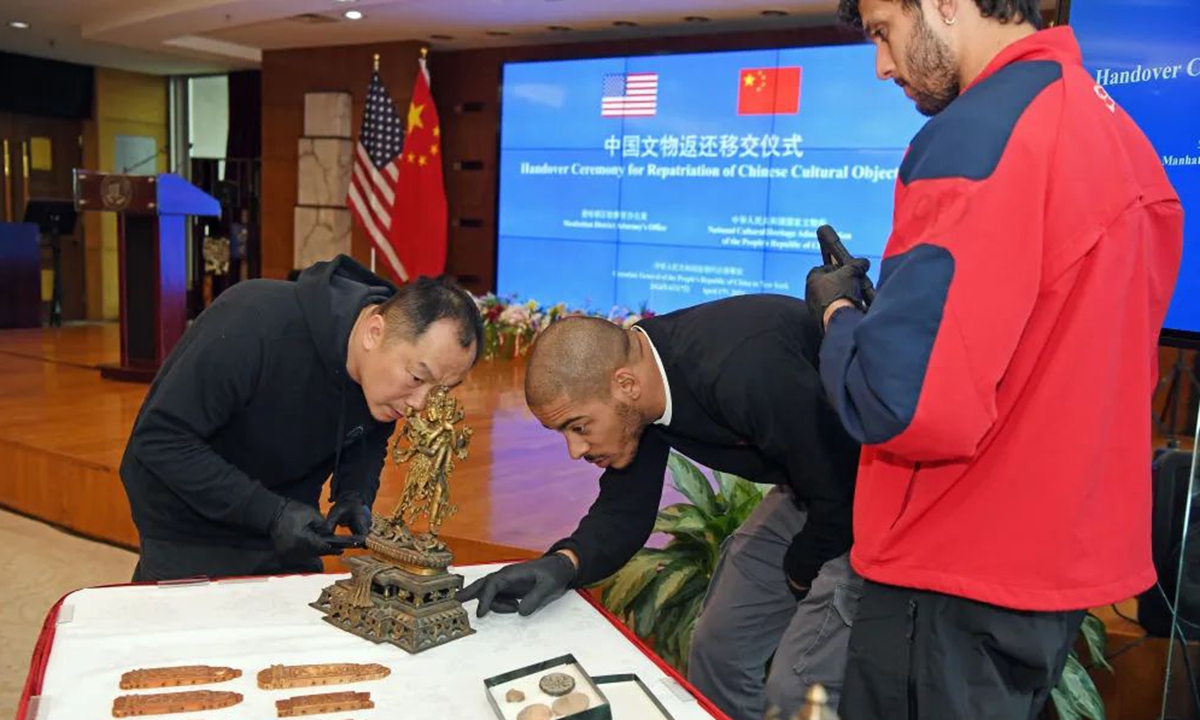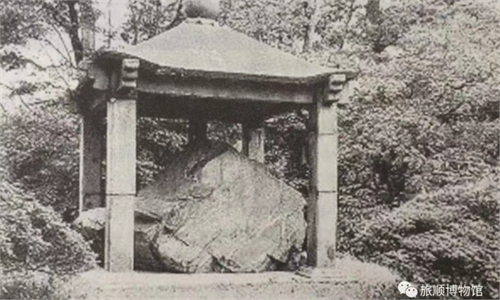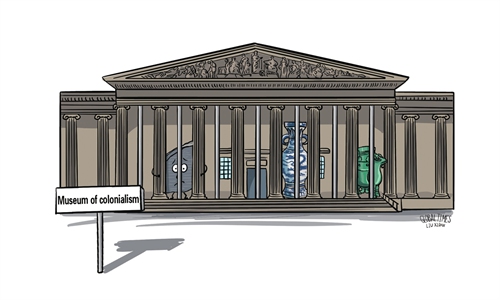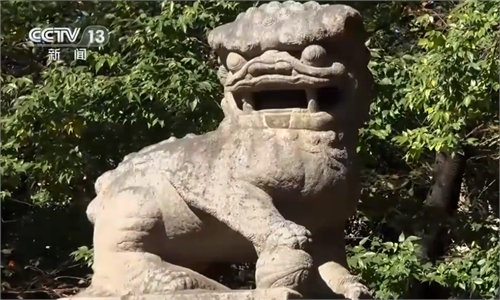ARTS / CULTURE & LEISURE
US returns 38 cultural relics to China; more similar cases in the future?
Will there be more similar cases in the future?

Handover Ceremony for Rrepatriation of Chinese Cultural Objects held at the Chinese Consulate General in New York. Photo: Xinhua
A total of 38 Chinese cultural relics, including a Buddhist pagoda, were returned from the US to China on Wednesday.
This batch of artifacts predominantly consists of Chinese Buddhist objects that date back to the Yuan (1279-1368) and Qing (1644-1911) dynasties. It was handed over by the Manhattan District Attorney's Office to a delegation from China's National Cultural Heritage Administration (NCHA) at a ceremony held at the Chinese Consulate General in New York on Wednesday.
The repatriated artifacts encompass a wide range of categories, including Tibetan Buddhist statues and ornaments, rare ivory and wood carvings and mural fragments that have important historical, artistic and scientific value.
Li Qun, deputy minister of culture and tourism and head of the NCHA, said at the hand-over event that the repatriation of these 38 relics indicate the "two sides [China and US] are working toward the same goal of establishing mutual trust in the recovery and return of cultural relics."
Speaking about how the relics were originally brought overseas, Tian Ai'ming, a cultural heritage management expert, told the Global Times that he believes that these artifacts were most likely smuggled out of the country and then resold "by curio dealers in the US."
"Chinese relics that drift overseas are often spotted in criminal cases, so we can predict that there is still a profitable black market there," Tian told the Global Times.
In March, these artifacts were confiscated by the Manhattan District Attorney's Office. The news was taken seriously by NCHA and the Chinese Consulate General in New York, who worked with US departments on their return. The NCHA is now arranging for these relics to be shipped to China.
In January 2009, China and the US signed a memorandum of understanding (MOU) to combat the unlawful entry of Chinese cultural artifacts into the US. Its validity was extended for the third time on January 14.
While acknowledging that the 38 artifacts mark the most recent achievement regarding the extended MOU, Li emphasized that China will continue to actively implement the MOU through "establishing and improving the information notification mechanisms concerning stolen cultural relics with the US."
Prior to this repatriation of artifacts, in May 2023, two Chinese stone carvings were also returned from the US. Those relics had been illegally transported overseas. Between January 2019 and January 2024, a total of 504 Chinese artifacts, including a paleontological fossil, were returned to China from the US.
Highlighting the fact that cultural heritage has the power to "bridge differences," Matthew Bogdanos, the chief of the Antiquities Trafficking Unit of the Manhattan District Attorney's Office, said that the US is willing to work with China to protect the common cultural heritage of mankind.
Apart from the US, Tian told the Global Times that cultural facilities in other Western countries are also starting to "experiment with the possibility" of voluntarily returning Chinese relics via approaches such as collaborative research projects.
In 2023, seven German museums initiated a collaborative research project with Chinese peer facilities like the Palace Museum to carry out an inventory of relics in their collections looted during the Boxer Rebellion.
In the same year, Switzerland's Federal Office of Culture (FOC) also returned five relics, including a 2,000-year-old equestrian statue, to China.
"This restitution is an important sign of the fruitful cooperation between Switzerland and China as well as the fight against the illicit trafficking of cultural property," Fabienne Baraga, head of FOC's Specialized Body for International Transfer of Cultural Property, told the Global Times.




